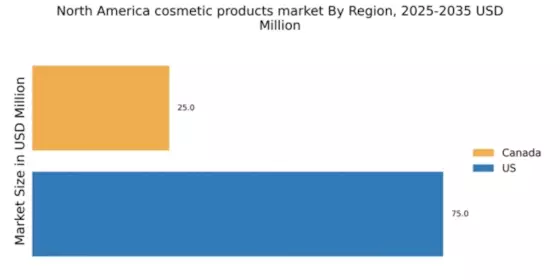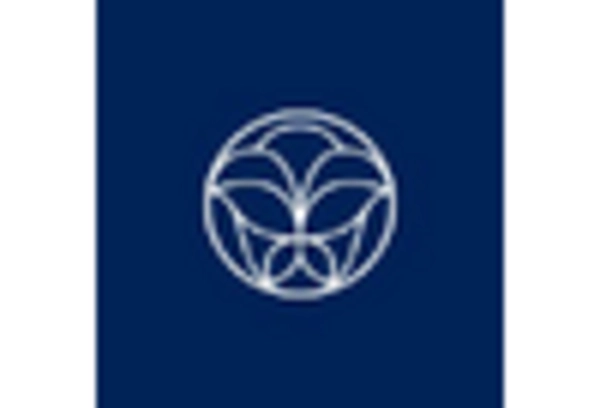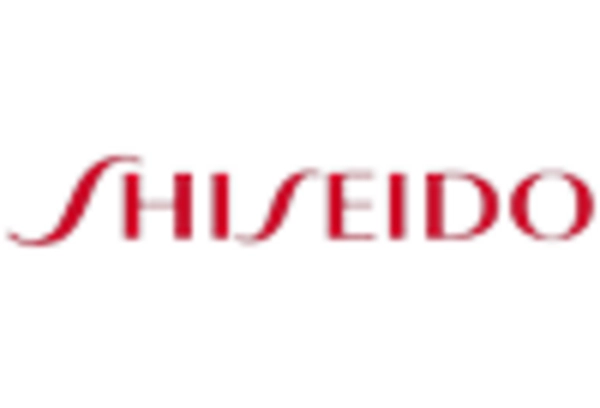Rise of Male Grooming Products
The cosmetic products market in North America is witnessing a significant rise in the male grooming segment. Traditionally dominated by female consumers, the market is now seeing an increasing number of men investing in skincare, haircare, and grooming products. This shift is attributed to changing societal norms and a growing acceptance of self-care among men. Recent statistics indicate that the male grooming market is expected to reach $30 billion by 2026, reflecting a CAGR of around 6%. This burgeoning interest in male grooming is prompting brands to expand their offerings and tailor marketing strategies to engage this demographic within the cosmetic products market.
Growing Demand for Natural Ingredients
The cosmetic products market in North America is experiencing a notable shift towards natural and organic ingredients. Consumers are increasingly seeking products that are free from harmful chemicals and synthetic additives. This trend is driven by heightened awareness of health and wellness, as well as a desire for sustainable beauty solutions. According to recent data, the market for natural cosmetics is projected to grow at a CAGR of approximately 8% over the next five years. This growing demand for natural ingredients is reshaping product formulations and marketing strategies within the cosmetic products market, compelling brands to innovate and adapt to consumer preferences.
Sustainability and Eco-Friendly Packaging
Sustainability has emerged as a critical driver in the cosmetic products market in North America. Consumers are increasingly prioritizing eco-friendly packaging and sustainable sourcing of ingredients. Brands are responding by adopting recyclable materials and reducing plastic usage in their packaging. Recent surveys indicate that approximately 70% of consumers are willing to pay a premium for sustainable products. This shift towards sustainability is not only a response to consumer demand but also a strategic move to enhance brand loyalty and reputation within the cosmetic products market. Companies that embrace sustainable practices are likely to gain a competitive edge in this evolving landscape.
Influence of Social Media on Consumer Choices
The impact of social media on purchasing decisions is profoundly shaping the cosmetic products market in North America. Platforms such as Instagram and TikTok are becoming essential for brand visibility and consumer engagement. Influencers and beauty content creators are driving trends and shaping consumer perceptions, leading to increased sales for featured products. Data suggests that approximately 40% of consumers are influenced by social media when making beauty purchases. This dynamic underscores the importance of digital marketing strategies for brands aiming to capture the attention of a tech-savvy audience within the cosmetic products market.
Technological Advancements in Product Development
Technological innovations are playing a pivotal role in the evolution of the cosmetic products market in North America. Advances in formulation science, such as the use of biotechnology and nanotechnology, are enabling brands to create more effective and targeted products. For instance, the incorporation of smart technology in skincare products is gaining traction, allowing for personalized beauty solutions. The market is witnessing an increase in R&D investments, with companies allocating approximately 5% of their revenue towards innovation. This focus on technology not only enhances product efficacy but also aligns with consumer expectations for high-performance cosmetics within the cosmetic products market.


















Leave a Comment